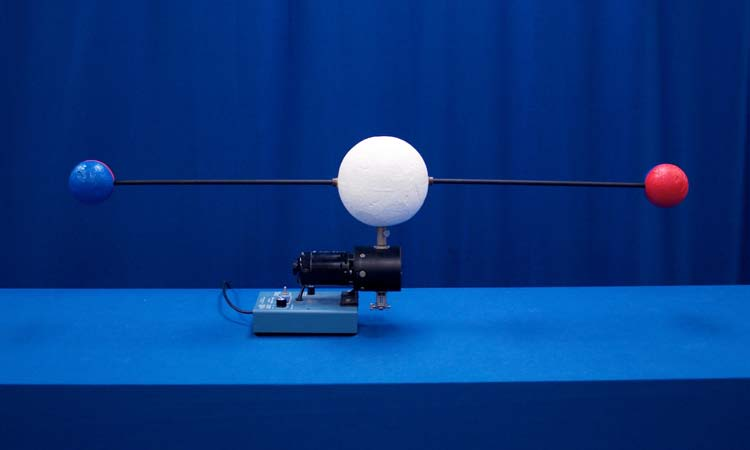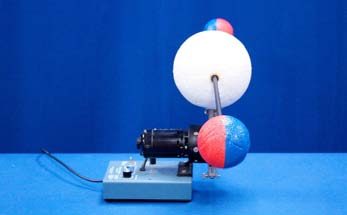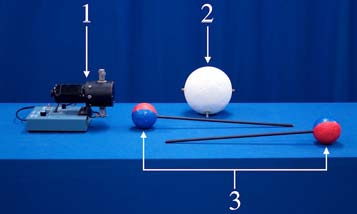


Concept
The white ball represents the center of a galaxy. The colored balls represent stars revolving around the galactic center. The amount of red/blue seen represents the degree to which the spectrum is Doppler shifted. A star’s spectrum is shifted toward the blue as the star approaches the observer because its wavelength is compressed. As the star recedes from the observer, the spectrum shifts toward the red} since its wavelength is extended. A useful mnemonic device is “red for recede”.
The Doppler shifted frequency for light with observer and source moving toward and away from each other with relative speed v are given, respectively by
$$f_{observer}=\sqrt{\frac{1+\frac{v}{c}}{1-\frac{v}{c}}}f_{source} \ \text{ and } \ f_{observer}=\sqrt{\frac{1-\frac{v}{c}}{1+\frac{v}{c}}}f_{source}.$$
The effect clearly becomes more pronounced as the relative speed $v$ approaches the speed of light $c$.
Procedure
- Verify that the white ball is securely attached to the rotator base and the colored balls are arranged as shown in the top-left picture.
- Toggle the rotation direction switch to counter-clockwise (CCW).
- Turn the rotation speed knob clockwise to turn the powered rotator on and adjust its speed.
- Use the switch on the power strip (not shown) to turn the motor on and off – to avoid being hit by the revolving balls.
Equipment
- Powered Rotator
- Large Styrofoam Ball
- (2) Small Red/Blue Styrofoam Balls with Dowel Arms